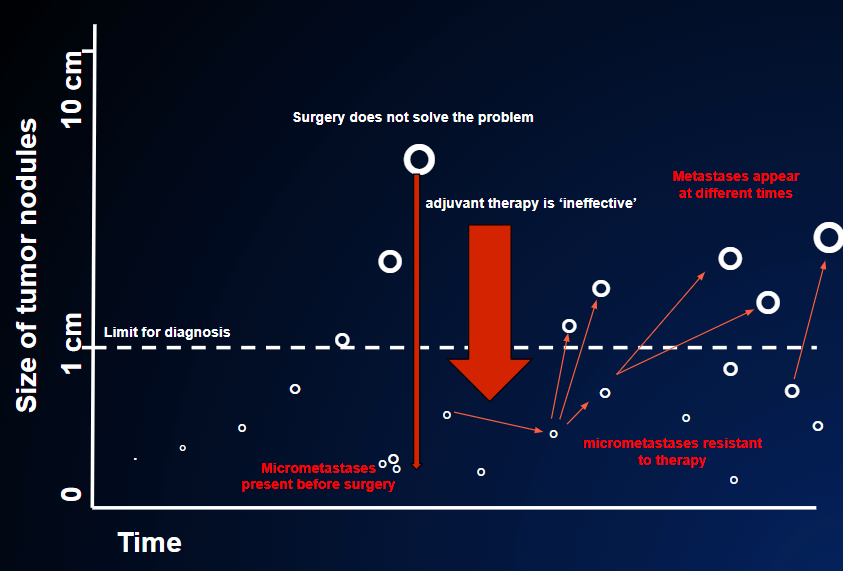In contrast with what has been said in the previous sections, in some special cases in which the disease has a particularly benign course, the removal of metastases may lead to cure or to very good long-term results. These are cases in which:
- the metastases appear a very long time after the initial surgical operation; this means that the primary tumor was not very aggressive;
- the metastases are single, two, three or, in any case, “few”;
- they are in organs that are operable, such as the liver or lung, and not in difficult sites, such as the peritoneum, pleura or deep abdominal lymph nodes;
- they originate from tumors that are generally slow-growing and which release fewer metastases (colon tumors and sarcomas, as opposed to tumors of the pancreas, stomach, lung and breast)
The most “classic” case in which the chances of cure are very good is that of a single metastasis that turns up in the liver 2-3-5 years after the removal of a primary tumor from the intestine. In this case, the removal of a single metastasis can result in cure in as many as 50% of cases. Even single metastases in the brain can be successfully removed in certain cases. In sarcomas, which preferentially metastasize to the lungs, very good results can be achieved by the surgical removal of multiple metastases, even if they number more than 10.
In some cases, local intervention (surgery or radiotherapy) is carried out without previous medical therapy (chemotherapy, hormone therapy, immunotherapy). Very often, however, medical therapies are administered before metastases are removed, as this can shrink the tumor and make surgery easier.
In general, no adjuvant therapy is administered after the surgical removal of metastases when this has already been previously administered. This is because adjuvant therapy is not very effective in preventing further relapses. Indeed, metastases develop from those cells that survive the preventive therapy administered after surgery on the primary tumor; in other words, metastases arise from cells that are resistant to therapy FIGURE 14.

However, in cases in which no preventive therapy was administered after surgery on the primary tumor, it is common practice to prescribe adjuvant therapy after the removal of metastases.
